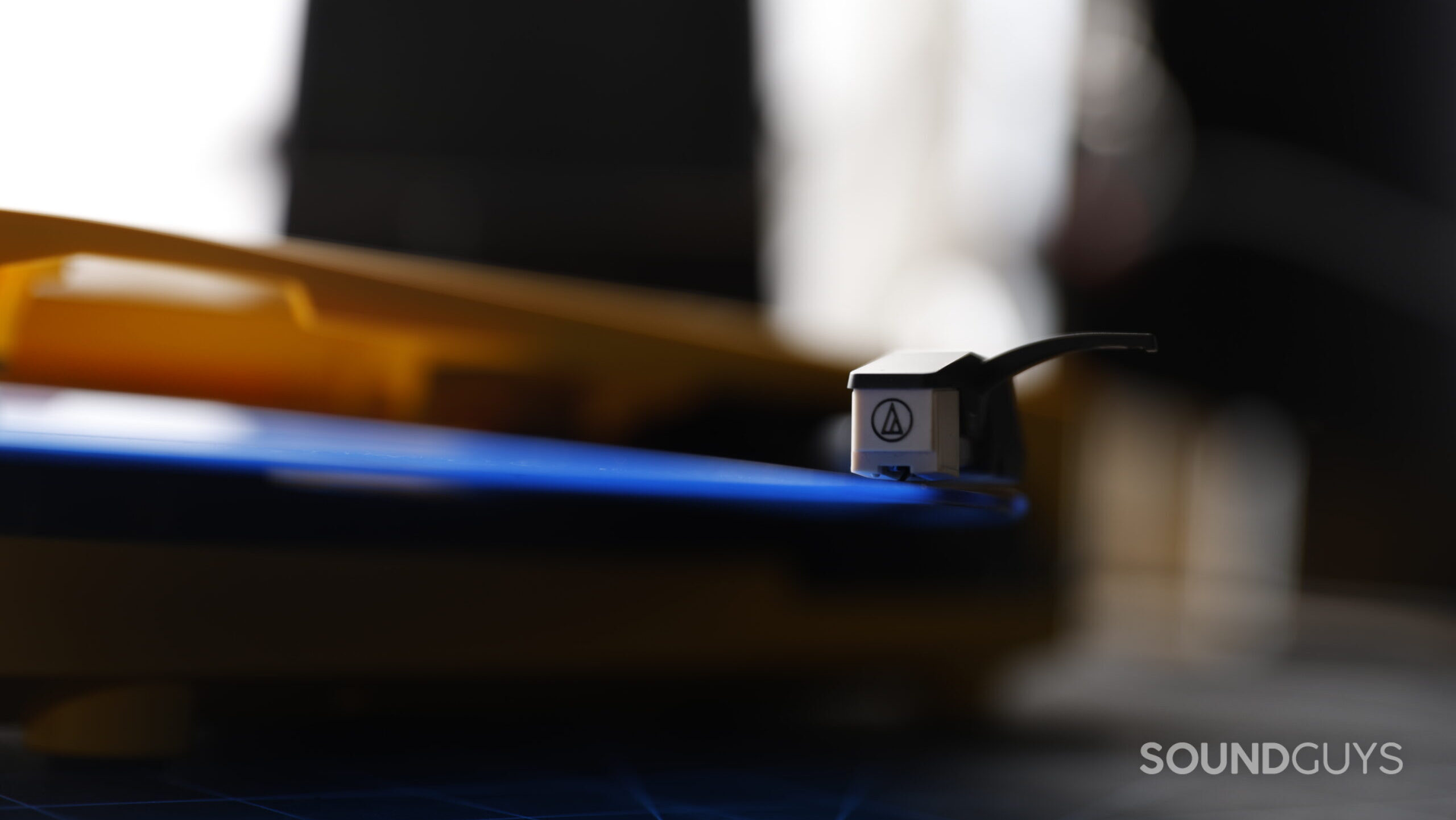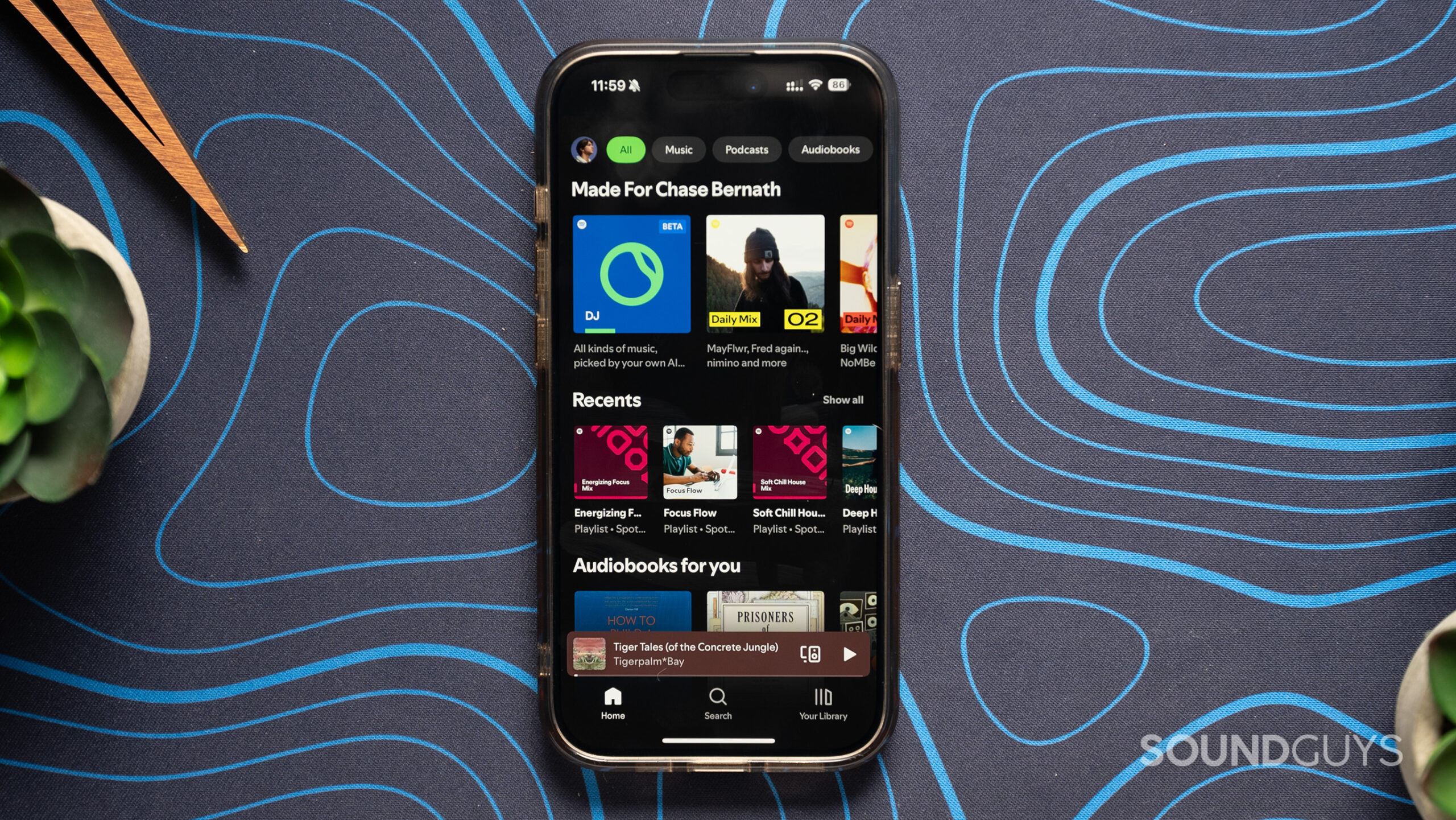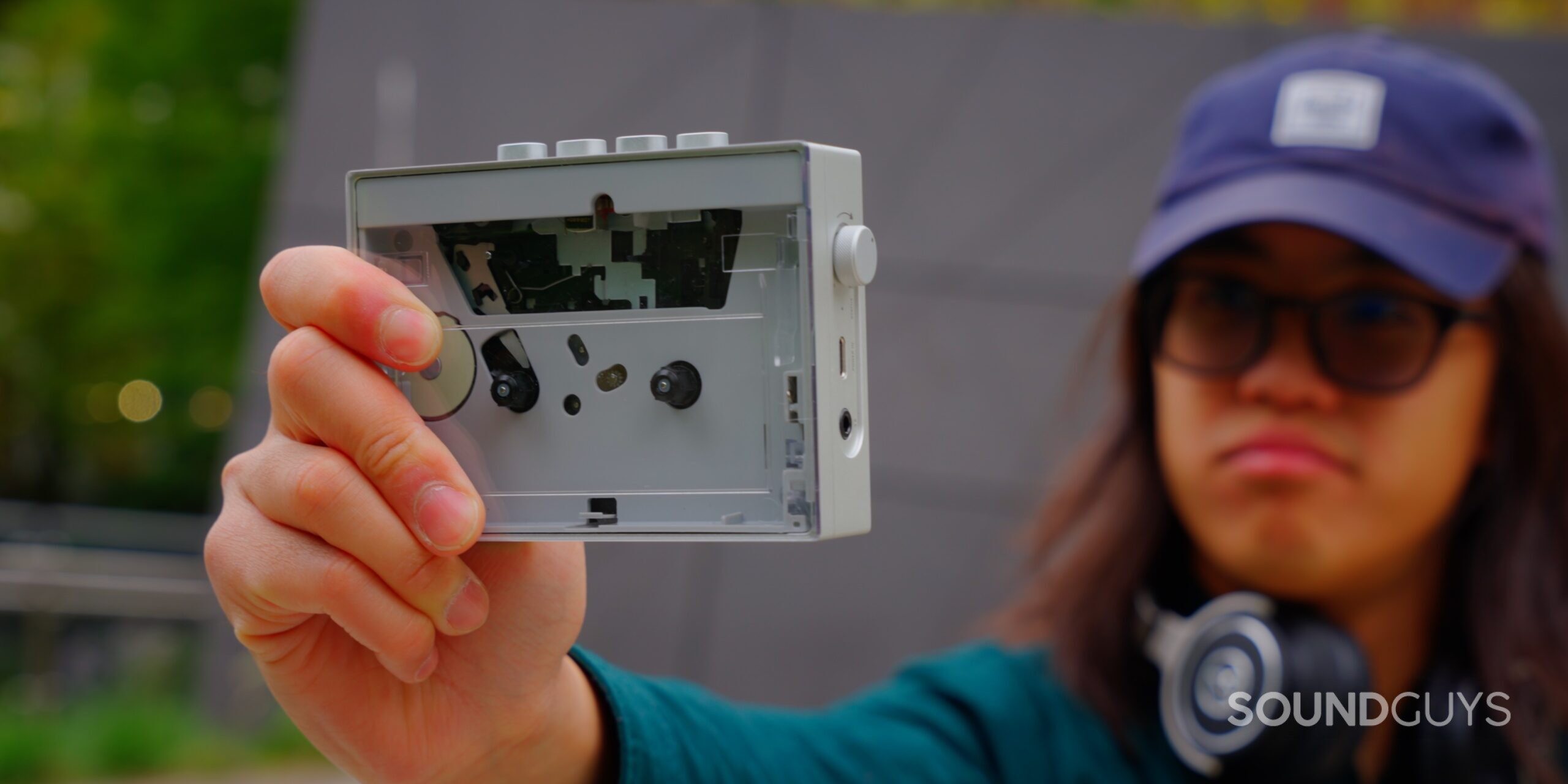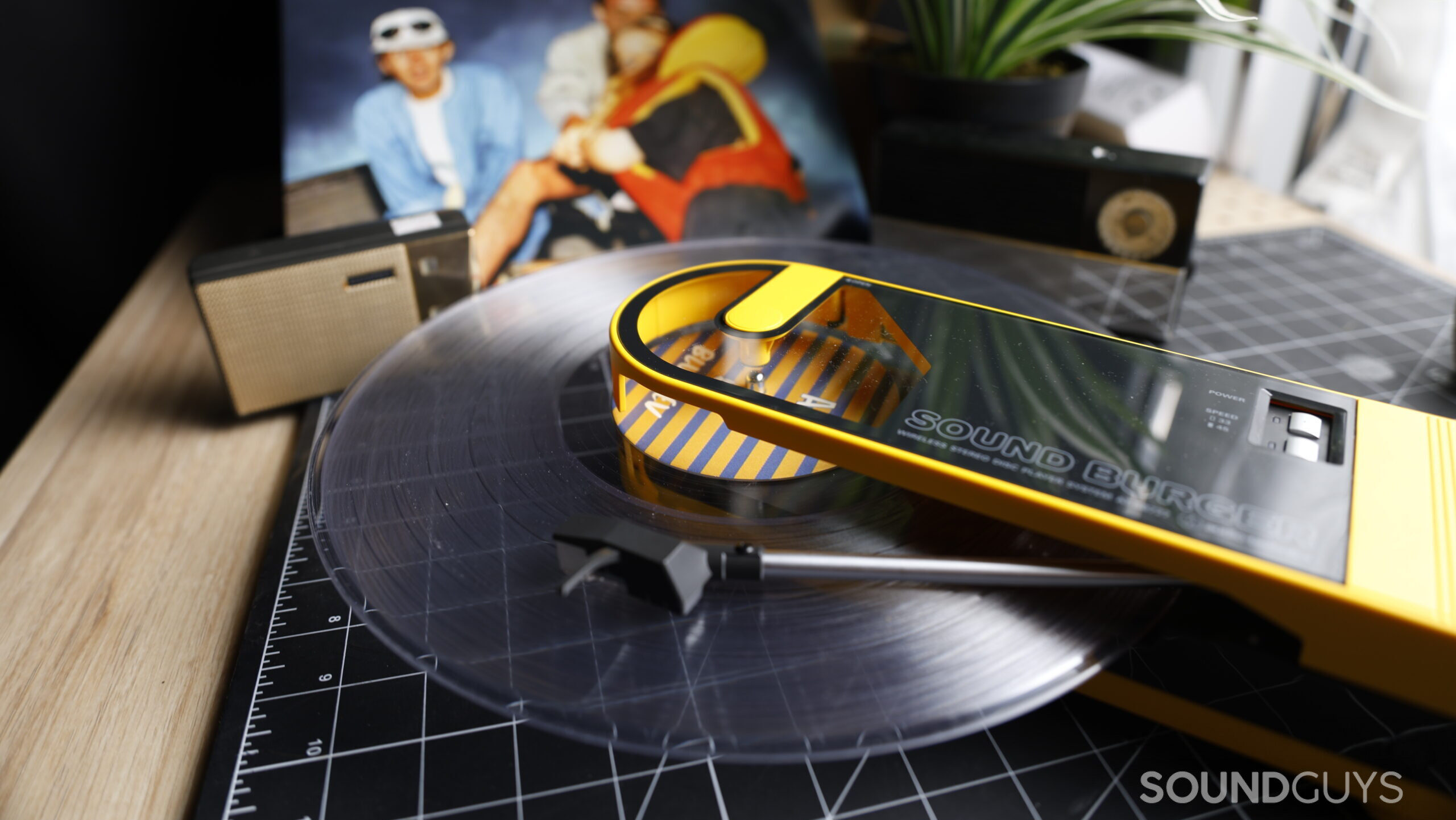All products featured are independently chosen by us. However, SoundGuys may receive a commission on orders placed through its retail links. See our ethics statement.
The vinyl revival: Why imperfection still matters
November 1, 2025

We live in a world where seemingly everything is instant, and music is certainly no exception. From Spotify to Apple Music and YouTube to TikTok, the way we consume music has become frictionless — immediate, algorithmically tailored, and endlessly scrollable. We’ve flattened time in this way because we have all the world’s music at our fingertips, across time, across eras, accessible to us on a mere moment’s notice.
It seems strange, then, that old music technologies like vinyl are suddenly making a comeback. Beginning in the early 2010s, as digital downloads and music streaming services began to replace other forms of physical media, such as CDs and cassette tapes, vinyl simultaneously experienced a wave of renewed popularity. By the early 2020s, vinyl outsold CDs for the first time since 1987. And today, you can’t go two steps in your local hipster neighborhood without stumbling across your local record store, stacked to the brim with floor-to-ceiling shelves full of records, and tons of turntables just flying off the shelves.
Where records were once seen as dusty relics of a bygone era, it seems to me that they’ve now become prized artifacts of authenticity. To some, they represent a form of rebellion against the ephemeral nature of digital culture. To others, they’re simply a new, more meaningful way to connect with music. Either way, their resurgence speaks to a much deeper cultural longing: not just for sound quality or new cover art or that sweet, sweet crackle, but for ritual, for texture, and above all, for presence and community in our modern age.
So why vinyl, and why now? Maybe because we’re overwhelmed, or because everything else feels so fast, so disposable. Maybe putting on a record is one way of saying, however small, however insignificant, that not everything has to be this way.
Do you listen to vinyl?
Why the past still feels so close

I grew up in the age of streaming. Spotify, Apple Music, YouTube — the entire world’s discography, from any artist or genre I could imagine, right at my fingertips. But there’s something about vinyl that just sounds better than streaming.
There’s something inherently nostalgic about vinyl, and I’m curious as to why it evokes such nostalgia in me, considering I never lived through a time when records were used regularly. The crackling sound when you put on a record, the little pops as the needle treads over dust, and the like. It’s that warm and fuzzy feeling, and tapping away on my phone or computer for my favorite music streaming service just isn’t the same.
What is it about that act that’s somehow so nostalgic, so much so that it can make you long for a time you never personally experienced? This ancient technology connects me back to these earlier moments in my life, even though I never used it then. I think it’s because it’s slower, more methodical, and makes me long for a simpler time. It’s got problems that make the act of listening to music so much more intentional. The act of buying music is the same way — and it means you get to support your favorite artists while you do it. Listening to my favorite albums on vinyl reminds me of record shopping in my hometown, one of the first places I’d venture out to on my own. It reminds me of going there with my friends on a day out.
It’s the imperfection of vinyl that reminds me of a simpler time, a time when everything wasn’t so clean and instant.
And it perhaps reminds me of our own time, reminding me of the imperfections in my own life and world, and encouraging me to lean into that, look for meaning and value in difficulty, simplicity, and community.

This need for stillness is, I’d argue, what’s bringing people back to all these old technologies, like film, tape, old digicams, and, of course, vinyl. The imperfect look of older cameras gives the look and feel of a simpler time, and the crackling, imperfect sound of vinyl brings you back to that moment of simplicity, even if you didn’t live through a time where this technology was standard or widely used. Something about it connects you back to this barer essence of what it means to be human, what it means to live in the world, to experience music. There’s something basic and bare about it. In that way, nostalgia can transcend the linearity of temporal space and time — ever notice how things can look nostalgic, even if they were made recently? More often than not, it’s because there’s something about the medium that’s visceral and happening right before you.
Returning intentionality to music
After years of streaming, of skipping and scrolling and letting algorithms decide what I should hear next, I’ve come to love the ritual of going to a record store. To me, it’s a slow antidote to everything instant. The simple act of walking through the door and hearing whatever album happens to be playing that day. Holding my music in my hands — literally holding an artist’s music in your hands. The cover art they ached over, the literal grooves in the record that spawned from a labor of love. You build a certain connection with the music that you own. Owning the liner notes, the album cover, getting to put them on a shelf with the rest of your music, your favorite albums.
Where digital music collapses everything into a flat timeline, vinyl restores weight: the weight of choosing, touching, keeping. I love the feeling of shopping for records. Sometimes I go there just to pick out old favorites, other times I browse the crates for stuff I’ve maybe heard once or twice. I love getting to make that a part of my day, an event that I look forward to on the weekends. If nothing else, it’s a hobby. Something fun to look forward to at the end of a hard day.

Every step of that process, from flipping through bins to sliding the sleeve back into place, or from displaying it in your house to cleaning it and putting it on the turntable, feels deliberate. It takes time. It commands your attention. And that’s precisely the point.
In a world where music chases us, vinyl waits — patient, unmoving, ready when we are.
Listening to music on vinyl is an occasion for me, whereas listening to music on my phone usually means I’m doing something else at the same time. It’s like putting on background noise, and I never feel like I’m really listening to it. Sometimes I’ll completely forget what song I was just listening to. But with my records, I put them on to listen, on a quiet evening when the snow’s falling outside, and to really listen. The small inconveniences – the flipping, the waiting, the occasional skip – become ritualized as part of the rhythm. Where streaming demands nothing of us, vinyl asks us to meet it halfway. Skipping songs is inconvenient and tough on these things, so much of the time I sit down to listen to the whole album. The record demands attention, and in return, it gives presence.
In defense of imperfection…

There’s something almost magical about vinyl, about the sheer miracle of it all, and how it’s able to even generate these sounds in the first place. There’s no digitality to it, no compression, no code. It’s honestly nothing short of a miracle, the idea that a single needle can translate a pattern of grooves into music, into depth, into feeling. It’s music made visible, sound etched into matter. The fact that we can embed such richness of sound into a needle that essentially scratches a piece of plastic, hopping precariously over a complex web of grooves, is something to behold. What’s most astonishing is you can watch the process unfold before you — the rotation, the movement, the faint vibration of the tonearm — and that visibility makes the act feel alive. There’s something to be said about the presence demanded of you when the sound, at its finest grains, is being generated before you every time you put a record on the player. You are seeing something happen, something moving, something real.
Vinyl offers a quiet rebellion against convenience. It gives us back the pause — the friction that makes the moment stick.
Make no mistake, though: like all real things, vinyl is not permanent. One day, it, too, will yield to time, and it, too, will end. Records warp over time, and slowly they degrade in sound quality. They carry their age with them, just as we do. Like a car, you have to take care of your records, maintain them over time, and even then, they, too, will inevitably stop working. It’s not unlimited, but precisely this scarcity is what gives the medium its power and allure.
And when your needle spins to the center, then comes the silence. The quiet goodbye, when the music ends and the needle lifts off the record. The final note echoes into silence. No autoplay, no algorithm. The music ends. The onus is instead on you, the listener, to flip the record or let it rest in silence. There’s no seamless transition, no next track waiting in the queue—just you, the record, and the air left behind. You have to choose again.
And that’s what life feels like, too. Moments that end, and the quiet that follows: a reminder that nothing continues unless we make it so. That presence is what vinyl is really all about. It’s a need to return to that presence, a hunger for immersion. Being present while you still can, to sit back and listen to music, to feel it, to listen intentionally, to play with intention, to experience art as a choice and not just as obligation or distraction — indeed, art, and not merely entertainment.
…against isolation…
Most of all, I love the sense of community that surrounds vinyl. I love having friends over and putting on a record, watching their quiet fascination with the ritual — that mix of novelty and nostalgia for something they’ve rarely experienced. Something is grounding about it, something that invites presence in a world that’s always rushing ahead.
Taking an evening to record shop with friends, flipping through crates, talking to the people who work there, getting involved in the local music scene — these moments create connection. They’re small, tangible acts of participation.
While it’s not impossible to find that sense of connection through streaming or other digital means, vinyl makes it easier. It gives you an excuse to show up, to talk, to share space with others who love what you love.
Where streaming isolates, vinyl gathers. Where algorithms separate, records invite.
…to reclaim the art of listening in a noisy world

Vinyl teaches us that it’s okay to stop, to sit, to listen. That silence isn’t emptiness, but space — the breath between notes that lets the song mean something. Vinyl doesn’t just play music; it creates a moment and asks you to take part in it. It’s fragile, yes, but that fragility is what makes it beautiful. Every scratch, every skip, every imperfection says: this happened — right here, right now. It’s proof of presence — the very thing our digital world keeps trying to erase.
We live in a culture that rewards immediacy: faster, newer, cleaner, cheaper. Vinyl pushes against that current. It asks for patience. It asks for care. And in return, it gives something back — presence, connection, ritual. It reminds us that not everything meaningful has to be efficient, that some things gain value precisely because they take time. Vinyl slows the world back down to human speed.
Vinyl isn’t just about music, but a metaphor for slowing down, for being present, for letting things be imperfect and alive. In its grooves and scratches, we find not just songs, but ourselves — a reminder that even in a world of endless noise, it’s still possible to listen.
The point, after all, isn’t to chase what’s next, but to hear what’s here. If vinyl can remind us to slow down, to listen with intention, and to be present in the noise, then its return is more than nostalgia. It’s a reminder, more important than ever, of what it means to be human.
Thank you for being part of our community. Read our Comment Policy before posting.